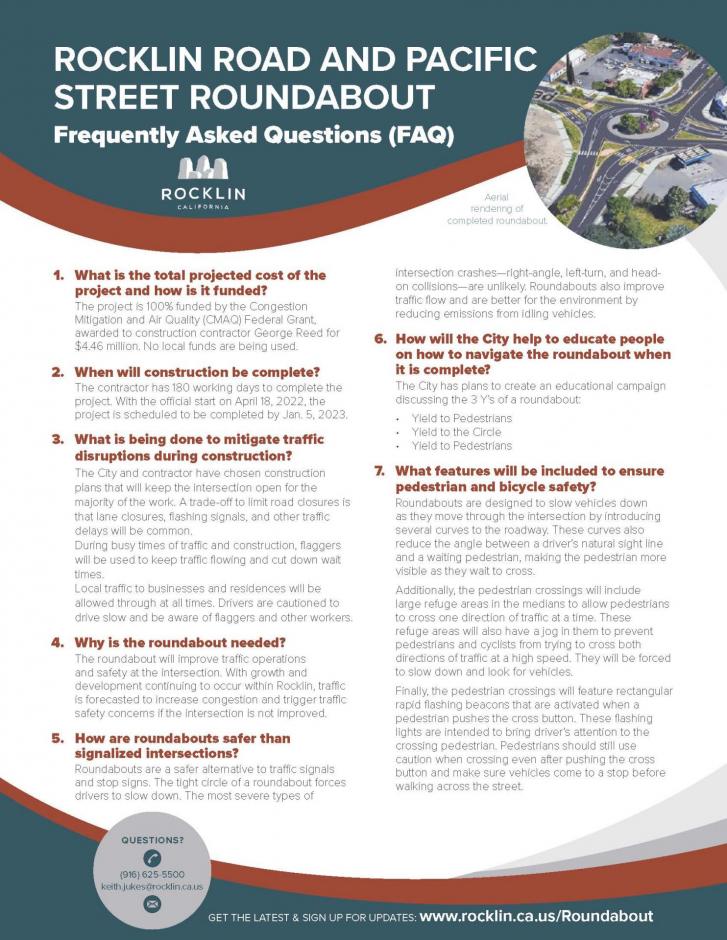Rocklin Rd. and Pacific St. Roundabout Frequently Asked Questions
1. What is the total projected cost of the project and how is it funded?
The project is 100% funded by the Congestion Mitigation and Air Quality (CMAQ) Federal Grant, awarded to construction contractor George Reed for$4.46 million. No local funds are being used.
2. When will construction be complete?
The contractor has 180 working days to complete the project. With the official start on April 18, 2022, the project is scheduled to be completed by Jan. 5, 2023.
3. What is being done to mitigate traffic disruptions during construction?
The City and contractor have chosen construction plans that will keep the intersection open for the majority of the work. A trade-off to limit road closures is that lane closures, flashing signals, and other traffic delays will be common. During busy times of traffic and construction, flaggers will be used to keep traffic flowing and cut down wait times. Local traffic to businesses and residences will be allowed through at all times. Drivers are cautioned to drive slow and be aware of flaggers and other workers.
4. Why is the roundabout needed?
The roundabout will improve traffic operations and safety at the intersection. With growth and development continuing to occur within Rocklin, traffic is forecasted to increase congestion and trigger traffic safety concerns if the intersection is not improved.
5. How are roundabouts safer than signalized intersections?
Roundabouts are a safer alternative to traffic signals and stop signs. The tight circle of a roundabout forces drivers to slow down. The most severe types of intersection crashes—right-angle, left-turn, and head-on collisions—are unlikely. Roundabouts also improve traffic flow and are better for the environment by reducing emissions from idling vehicles.
6. How will the City help to educate people on how to navigate the roundabout when it is complete?
The City has plans to create an educational campaign discussing the 3 Y’s of a roundabout:
- Yield to Pedestrians
- Yield to the Circle
- Yield to Pedestrians
7. What features will be included to ensure pedestrian and bicycle safety?
Roundabouts are designed to slow vehicles down as they move through the intersection by introducing several curves to the roadway. These curves also reduce the angle between a driver’s natural sight line and a waiting pedestrian, making the pedestrian more visible as they wait to cross.
Additionally, the pedestrian crossings will include large refuge areas in the medians to allow pedestrians to cross one direction of traffic at a time. These refuge areas will also have a jog in them to prevent pedestrians and cyclists from trying to cross both directions of traffic at a high speed. They will be forced to slow down and look for vehicles.
Finally, the pedestrian crossings will feature rectangular rapid flashing beacons that are activated when a pedestrian pushes the cross button. These flashing lights are intended to bring driver’s attention to the crossing pedestrian. Pedestrians should still use caution when crossing even after pushing the cross button and make sure vehicles


